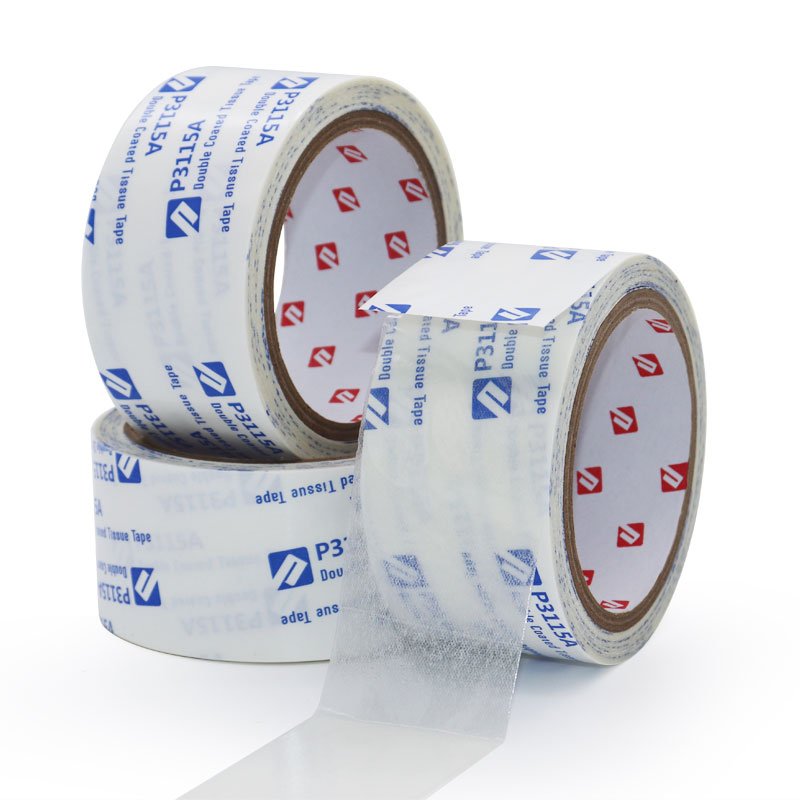Choose the right tape for the application. Sounds easy enough, but we find there’s a “one tape fits all” approach lurking on job sites and it’s wreaking havoc with your results. Tape is a tool, just like a yousan, just like a saw. In fact, you wouldn’t choose a reciprocating saw for a project that calls for a circular saw, so why use duct tape when the project calls for outdoor double-sided tape?
Speaking of double-sided tape, there are many different options available on the market. Before you just reach for the first one you see, ask yourself these 3 questions first:
Step 1: What are the two surfaces you are bonding?
Choosing the right double-sided tape begins by evaluating the surface characteristics of the two substrates you’re trying to stick together. For example, the flatter and smoother the surfaces are, i.e. glass, aluminum, PVC, the thinner the tape can be. Conversely, the rougher the surface is, i.e. wood, cement, brick, stucco, the thicker the rough surface adhesive tape needs to be to provide adequate contact.
 Transfer double-sided tape yousan P3306N
Transfer double-sided tape yousan P3306N
Step 2: What is your surface energy?
All surfaces have a property known as surface energy, the degree of attraction or repulsion force of a material surface exerts on another material. Substrates with a high surface energy form very good surfaces for bonding, like glass, glazed tile, and bare metals. Plastics can vary from reasonably easy to very poor. For example, polypropylene and polyethylene are very hard to stick to and call for a higher adhesion and a very tacky adhesive.
Conversely, a material like silicone has such “low surface energy” that conventional adhesives won’t stick to it at all. Working with this material would, therefore, require an incredibly tacky and/or silicone adhesive.
It’s also important to take treated surfaces into consideration. For example, if a surface is coated with paint, the tape might stick well to the coating, but it there is a weak bond (low surface energy) underneath, the tape and the paint might peel off.
Step 3: What temperature resistance do you need?
Next, take your environment into consideration and choose a temperature-resistant tape. The tackiness of the adhesive tape is very temperature-dependent, and the colder the conditions, the poorer the bond will be. If you must work at lower temperatures, then use a double-sided tape specifically designed for colder climates. The same holds true for extremely hot or wet conditions.
 Double Sided Tape Tissue Tape Yousan P3115A
Double Sided Tape Tissue Tape Yousan P3115A
Humidity, dirt, and UV conditions all play a role. Choosing the correct temperature-resistant tape for the climate variables at hand is very important!
Step 4: What other conditions should I consider?
When choosing the best double-faced tape for your project, it’s worth asking yourself these other key questions:
How long do you need the tape to hold? Meaning, do you need a temporary or permanent solution?
If you need to remove the tape, do you need it to be clean removal?
What will the tape be exposed to while you are applying it, and afterward? Consider moisture, heat, cold, water, UV, and dirt.
Does the tape need to be a certain thickness for the application to work?
What width do you need?
Is there any heat involved in the application process, i.e. in manufacturing?
Are there any specifications you need or are required for the job at hand?
What it all boils down to is knowing these three things: your job, your materials, and your field conditions.
Only then can you match the right adhesive with your project and decide if you need heat-resistant, extra wide, or specialty outdoor double-sided tape. By thinking about and answering these questions in regards to the adhesive, you can increase the longevity and success of your projects.












